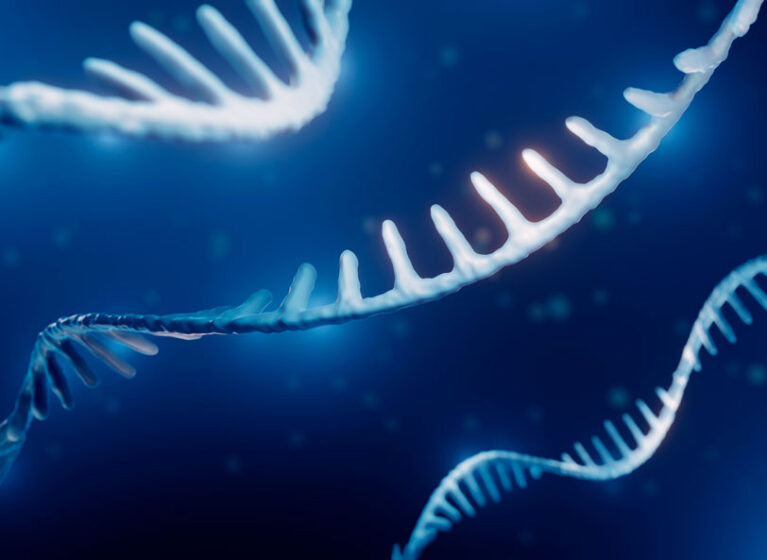
With a $2.1 million RO1 grant from the National Institutes of Health (NIH), UVA Health Children’s is leading an effort to uncover the role of RNA-binding proteins in heart development and congenital heart defects. This research lays the groundwork for potential RNA-based therapies for children with hypoplastic left heart syndrome (HLHS).
When the RNA-binding protein RBFOX2 mutates and loses function, we know it’s strongly associated with HLHS. But we don’t fully understand the process behind these mutations. Researcher Muge Kuyumcu-Martinez, PhD, is using the NIH grant to reveal this breakdown.
“We hope to determine how RBFOX2 controls RNA-mediated cellular processes and leads to the formation of the heart chambers,” says Kuyumcu-Martinez, a professor in the Department of Molecular Physiology and Biological Physics and a member of the Robert M. Berne Cardiovascular Research Center. “This should give us clues to how these defects happen in babies.”
The goal is to use that knowledge to correct aberrant RNA regulatory networks to prevent or treat heart conditions.
Kuyumcu-Martinez and her lab received the RO1 grant in August.
Improving Care for Hypoplastic Left Heart Syndrome
Finding new approaches to treat the life-long complications of this condition would have profound implications for people born with this congenital heart defect. Each year, over 1,000 babies in the United States are diagnosed with HLHS, which has a high mortality rate.
The only current treatment for HLHS is a series of 3 heart surgeries used to reroute blood flow so the right ventricle can also pump oxygenated blood to the rest of the body. “It’s a pretty complicated anatomical readjustment, and it’s miraculous how these children can survive just fine,” Kuyumcu-Martinez says.
However, later in life, people living with HLHS may develop complications as the right ventricle endures so much pressure. Sometimes, these patients require a heart transplant.
Studying RBFOX2 Mutations
RBFOX2 mutations occur in utero and are not inherited from parents. There are very few mouse models that exhibit some of the HLHS defects. This makes it difficult to model HLHS and understand how HLHS develops.
Kuyumcu-Martinez and her team created a mouse model that deleted the RBFOX2 binding protein in cardiac progenitor cells. The results showed that these mice:
- Did not develop all 4 heart chambers
- Had a small outflow track
These are some of the characteristic features of HLHS.
The NIH grant, plus funding from Additional Ventures’ Single Ventricle Research Fund, will support ongoing studies exploring specific RNA targets of RBFOX2 that regulate essential cellular processes.
“We want to understand how processing of these RNAs by RBFOX2 affects their protein production and function,” Kuyumcu-Martinez says.
Ongoing studies will delete RBFOX2 from different cell types in mice models, such as cardiomyocytes, endocardial cells, and endothelial cells. By tracking development after these deletions and using genome-wide RNA sequencing technology, the team hopes to identify specific RNA targets in these cell types.
Delving into RNA Biology
Kuyumcu-Martinez is well-trained in RNA biology. She studies post-transcriptional gene regulation at the RNA level. It started with her PhD research on poliovirus-induced cellular RNA binding proteins changes.
It’s usually believed that RNA simply reads your genetic code and then manufactures a protein. But actually, many processes occur in between, Kuyumcu-Martinez notes.
Transcription of DNA creates the pre-mRNA. This is then spliced as different sections of code are removed and the coding regions are joined precisely. The pre-mRNA is also cleaved at one end and capped on the other end to enable entry into the cytoplasm for protein synthesis.
“If these processes don’t go right, you don’t get the protein you want,” Kuyumcu-Martinez says. “But these RNA processing events are not well understood in the heart or during heart development.”
Her post-doctoral work focused on studying dysregulation of RNA-binding proteins found in heart and muscle disease and developmental defects. Her studies showed that some RNA binding proteins were abundant in heart and skeletal muscle during embryonic stages but dropped dramatically in adult stages. Some of these RNA-binding proteins are aberrantly upregulated in heart disease-altering RNA processing. This indicates that these RNA-binding proteins have important functions in the heart.
“Nobody has really looked into those,” Kuyumcu-Martinez says. “When I started my own lab, I wanted to work on how RNA binding proteins regulate heart development and heart function.”
Before the mutation related to HLHS was discovered, researchers knew that RBFOX2 was crucial to heart development. Human genetic studies proved that point.
Potential for Postnatal Gene Therapy
While the molecular and genetic changes that lead to HLHS occur in utero, if Kuyumcu-Martinez’s lab can identify the pathogenic RBFOX2 targets, therapies could be developed for postnatal use.
“There is potential to use small oligonucleotides or mRNA delivery to supply missing RBFOX2 or fix the essential targets of RBFOX2,” Kuyumcu-Martinez says.
Such treatments are far into the future. For now, Kuyumcu-Martinez’s main goal is to fully document the processes that lead to the development of HLHS.
She hopes to collaborate with cardiac clinics to access biopsy tissues to help validate findings from mice models. This might also uncover other gene mutations that can be tested with mouse models.